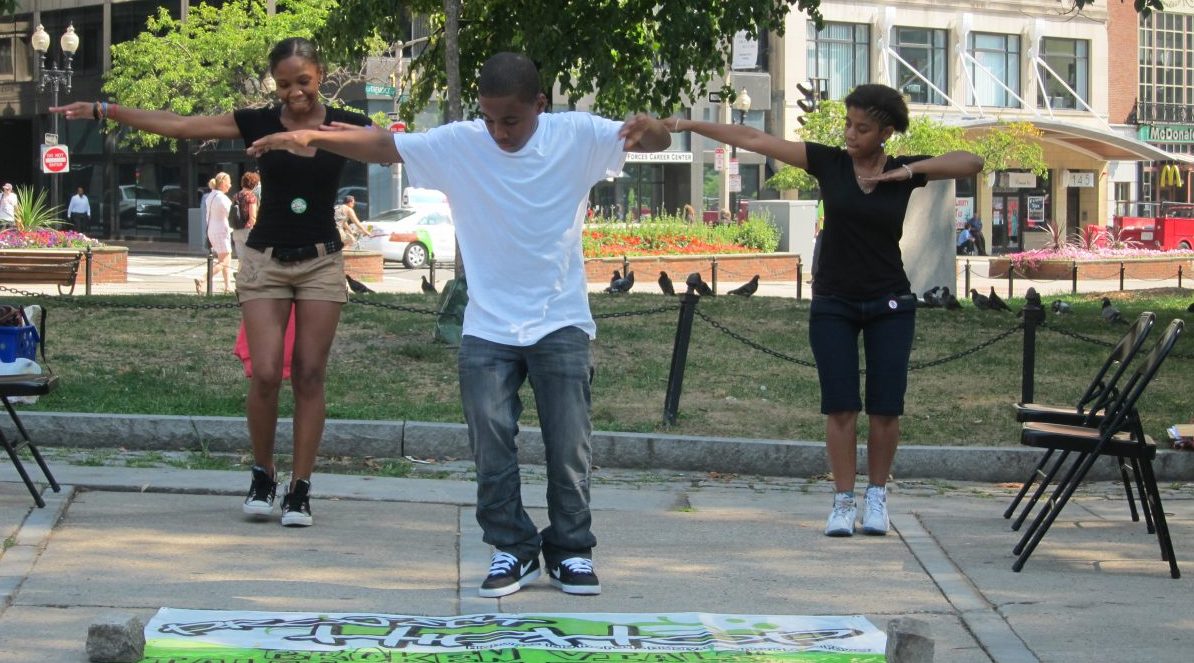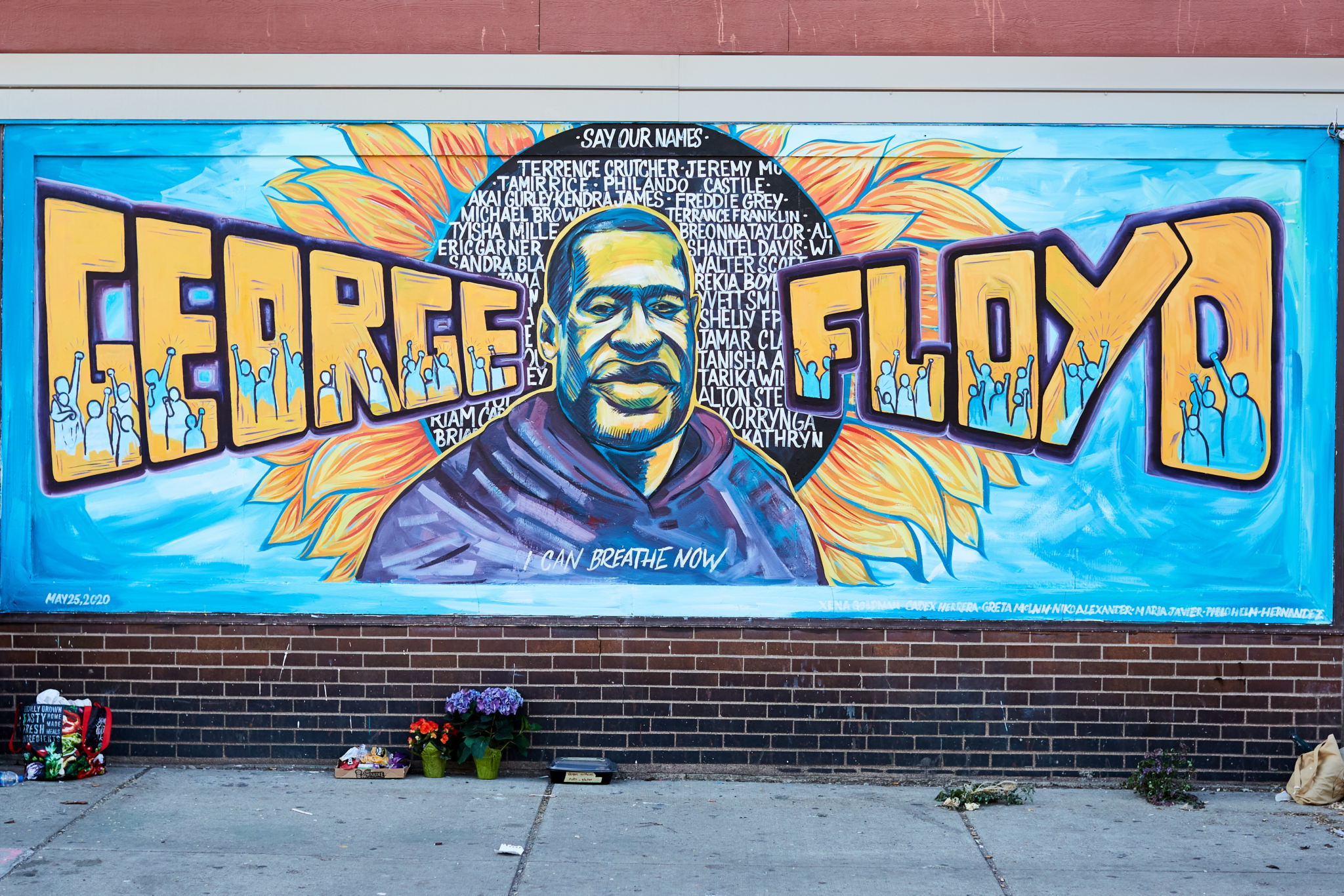Every generation, it seems, worries that the next one is not as politically active as it should be. But, in recent decades, a new concern has emerged: “gaps” in civic knowledge and participation in the US along lines of race and class. According to a number of researchers, youth from low-income Communities of Color score lower on measures of civic knowledge, civic attitudes, and political action than their white, wealthier peers. Harvard’s Meira Levinson labeled these disparities the “civic achievement gap”. More recently, she and others have begun referring instead to the “civic empowerment gap,” stressing that these disparities are rooted in unequal access to quality civic education opportunities.
These findings are highly disturbing. They suggest that Youth of Color are being systematically denied the education they need to be effective participants in political life. At the same time, this research seems to be contradicted by the political reality we see around us. From the the immigration activism of the DREAMers, to #BlackLivesMatter, to campus efforts to end racism and sexual assault, young People of Color are often at the vanguard of political and cultural change.
What explains these two simultaneous realities? One answer is differing definitions of what it means to be civically engaged. Evidence of the civic achievement/empowerment gap (for example, the NAEP civics test) tends to be based on a relatively narrow view of civic knowledge, skills, and attitudes. The “good citizen,” in this case, is someone who participates in formal government processes (voting, communicating with representatives), who can engage in traditional political debate, who identifies with “American” nationhood and values, and who is more or less supportive of the current system.
From the the immigration activism of the DREAMers, to #BlackLivesMatter, to campus efforts to end racism and sexual assault, young People of Color are often at the vanguard of political and cultural change.
The problem with this definition of the “good citizen” is that it fails to capture the diverse and changing face of civic engagement today. Alienated from traditional politics, young people have been turning to more grassroots and participatory forms of engagement like community activism and volunteering. They are involved in online and interest-based communities that build the skills and attitudes of participatory democracy but are not often seen as “political” spaces. They are becoming adept at cultural forms of engagement through the creation, remixing, and distribution of arts and media.
And this definition has never been adequate for understanding civic development in low-income Communities of Color. Communities that have been denied access to formal political power have long turned to more local, cultural, clandestine, and activist-oriented forms of engagement. Such engagement is often rooted in racial, ethnic, or tribal affiliations rather than national pride, and is based in a much more critical perspective toward the status quo.
Youth of Color today are continuing this tradition. While they may not vote at the same rate as their white peers, they often show equal or higher rates of engagement in other realms like local community involvement, online participation, and mutual support (like translating for neighbors). In one particularly rigorous national study, researchers found that when participatory politics — peer-based efforts to exert influence on issues of public concern — were included alongside more traditional institutional politics, Black youth actually demonstrated the highest levels of overall involvement.
Researchers found that when participatory politics were included alongside more traditional institutional politics, Black youth actually demonstrated the highest levels of overall involvement.
By pointing out these critiques of the “civic achievement gap,” I am not arguing against the need for more civic education opportunities. There are many youth (and adults) who are disengaged from civic and political life, and this is a loss for us all. I am arguing that a narrow definition of civic engagement offers a poor starting point for civic educators. Peddling a vision of the “good citizen” that is divorced from the reality of civic life in many communities is a recipe for irrelevance.
More importantly, the danger of rallying around “gaps” in civic knowledge and engagement is that we start with what we perceive to be lacking in low income Communities of Color, and can miss the many assets that Youth of Color bring to our shared civic lives. These assets — such as connections to histories of social movement organizing, networks of mutual assistance, fluency in new forms of social organization, and influential forms of art and communication — are the same assets that have powered the social movements of the past decades.
Amid rapid political, social, and technological change, we need a different kind of civic education. One that re-centers the cultural and historical experiences of marginalized communities. One that takes an expansive and pluralistic view of what a “good citizen” might look like. One that meets youth in the cultural, social, and online spaces where they already are, not just as a gateway toward “real” politics but as a way to learn from and support these evolving approaches to civic engagement. In other words, we need civic education that is culturally sustaining.
Culturally sustaining pedagogy, as coined by Django Paris, is about much more than making traditional content more “responsive” or “relevant” to students. It is about truly valuing the diverse languages, cultural practices, and forms of knowledge youth bring to the table. It is about maintaining and cultivating this cultural wealth, even while helping youth access the dominant culture and its systems. Whether we’re talking about heritage cultures passed down through generations, or the fast-changing world of youth culture, young people’s cultural backgrounds are not obstacles to overcome. They are foundations on which to build.
Young people’s cultural backgrounds are not obstacles to overcome. They are foundations on which to build.
Culturally sustaining civics, then, begins with the assumption that Youth of Color and other marginalized youth have access to powerful civic resources in their communities. Some of these resources relate to traditional institutional politics: for example, histories of voter registration organizing among African Americans. Others may be less directly connected to institutional politics, but are no less important. There is value, of course, in learning about institutional politics — how to run for office, for example, or petition a legislator. But this should not overshadow the value of building online social networks, or sharing one’s story through poetry, or offering help to extended family members, or organizing healing circles to address trauma, or developing a strong racial identity.
To teach civics in a culturally sustaining way requires a critique of civic education itself, including how it has been implicated in systems of colonization and racism. The very concept of citizenship has long been used to exclude not only those without certain legal documents but anyone who does not fit a particular vision (white, Christian) of the nation’s identity. Rather than promoting a hegemonic and nationalistic view of the “good citizen,” culturally sustaining civics opens up space for a plurality of civic identities, commitments, and approaches. It is about maintaining the civic skills, knowledge, and attitudes embedded in youths’ cultural communities as part of a broader project of redefining what it means to be a “competent and responsible” member of a society.
This post is based on the recent Harvard Educational Review article Hip-Hop Citizens: Arts-Based Culturally Sustaining Civic Engagement Pedagogy. For more on culturally sustaining pedagogy, check out Culturally Sustaining Pedagogies Teaching and Learning for Justice in a Changing World.
Photo at top: A street performance by the youth cultural organizing group Project HIP-HOP



